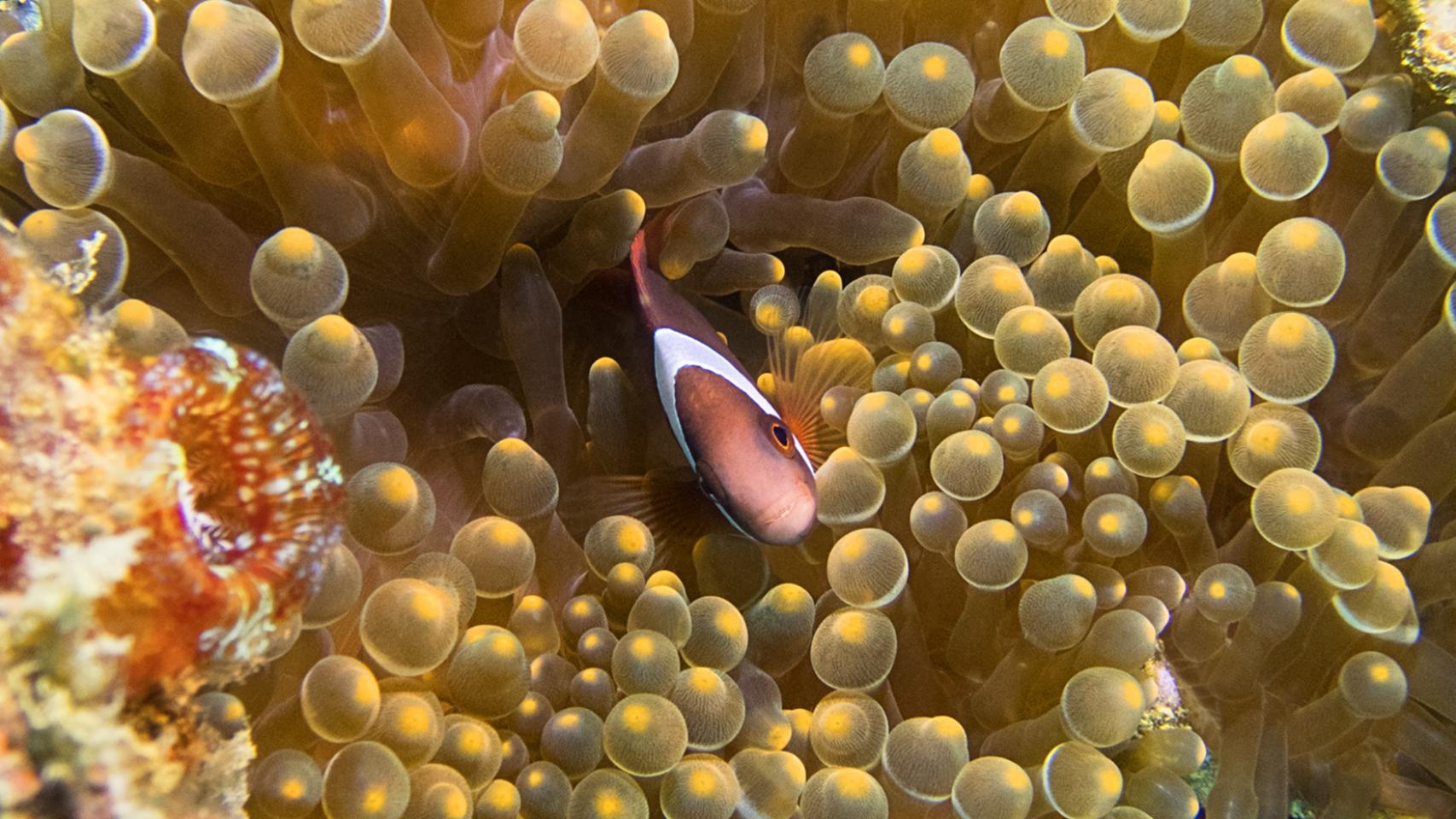Andrade’s file has some 70,000 photos that he has taken in the depths of the Spanish seas, but also in places as diverse as the Maldives, Indonesia, the Philippines, Micronesia, Oman, Australia, Thailand, the Seychelles, Polynesia, Mozambique, Tanzania or other places on the African continent.
SDG 14 focuses on conserve and sustainably use the oceans, seas and marine resources. The oceans power the systems that make Earth habitable. The sea provides and regulates rain, drinking water, climate, oxygen, and many of our food.
Protecting the oceans must be a priority and marine biodiversity is vital to the health of human beings, and also of the planet. Knowing the seabed better is essential. That is why Montse Andrade reveals to us today a selection of her classified photographs of cnidarians.
These make up a family of marine animals that includes 11,000 species, such as jellyfish, soft corals, gorgonians, black corals, pennatulaceae, anemones and hydrozoans.
The name comes from its stinging cells called cnidocytes, located in a series of tentacles that surround a mouth that has the internal gastric cavity. These cells are used to injecting toxins as a defense and prey capture.
Most cnidarians have radial symmetry from a center point, although there are two different morphological types: the polyp and the jellyfish. The polyp is cylindrical and the jellyfish is bell-shaped with the mouth in the concave part of the mouth, with the tentacles hanging off the edge of the bell.
Cnidarians they are carnivorous and omnivorous: they feed on plankton, and constitute an important link in the food or trophic chain, contributing to the transfer of energy from the pelagic system -free life in the oceanic water column- to the benthic system, linked to the seabed.
In some species, their growth gives rise to hard structures that make up coral reefs, support of one of the richest biological ecosystems on the planet.
*** At the bottom of each image the place where it was taken and the complete classification of the invertebrate or algae photographed is detailed.
Follow the topics that interest you
Reference-www.elespanol.com
